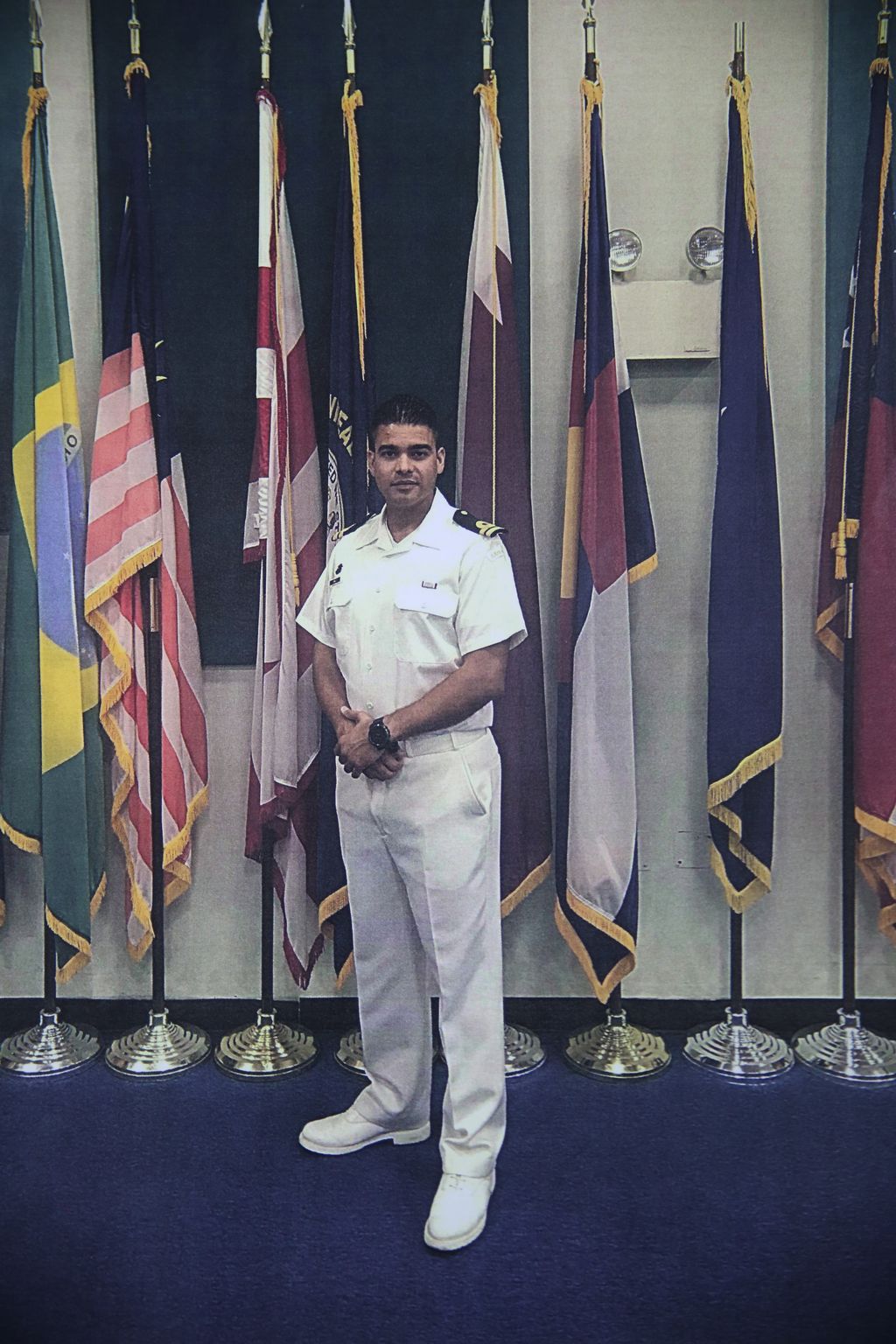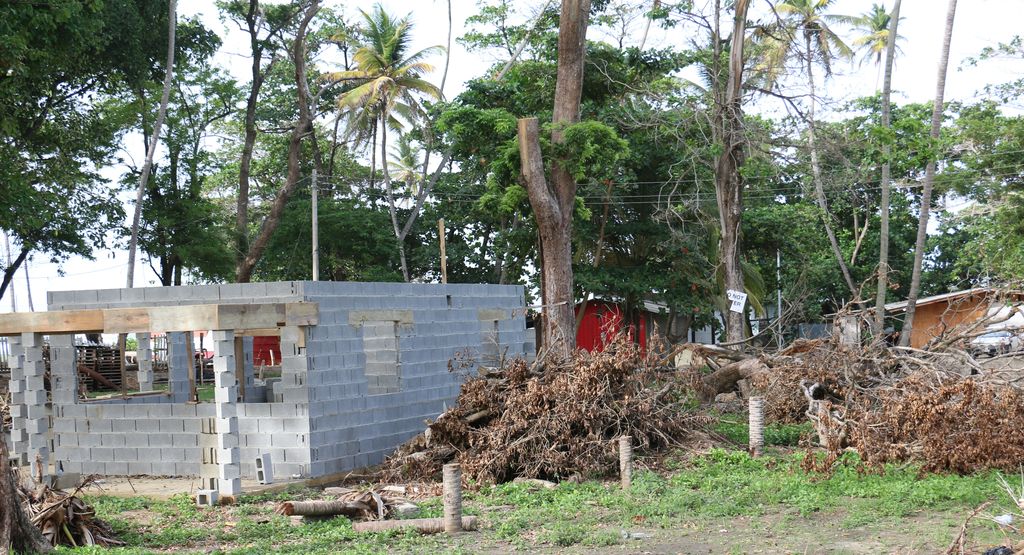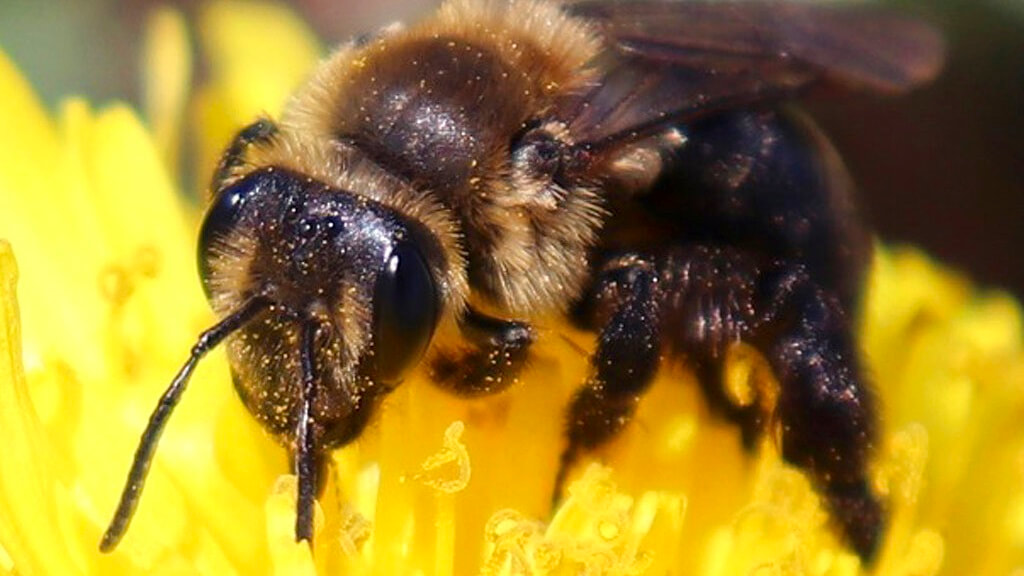|
Representatives of Tourism Trinidad Limited gathered at the Residence, One Woodbrook Place last Monday to extend their good wishes to the 2019 National Culinary Team. The team left Trinidad on Thursday to participate in the Taste of the Caribbean competition carded for tomorrow in Miami.
Led by Captain Jeremy Lovell, the team comprises senior chefs Shonelle Greenidge and Gerard Cox, junior chef Jodi Eversley, pastry chef Keenan Lezama and bartender/mixologist, Isaiah Trumpet—all currently enrolled students at Trinidad and Tobago Hospitality and Tourism Institute (TTHTI). "This is the first all-student national culinary team that Trinidad has ever sent abroad to the competition," said Brian Frontin, CEO, Trinidad Hotels, Restaurants & Tourism Association (THRTA). Frontin said the decision to send an all-student team came about when they recognised that over 95 per cent of all former team members had graduated from the TTHTI over the past 20 years. Frontin said he sees this as a pilot project that will provide the stimulus and justification for Trinidad to host an inter-school regional and international culinary competition—a junior version of the competition next year, and indicated that organisers of Taste of the Caribbean in Miami have already agreed to hold discussions on this proposal. Frontin added, "Hosting this competition in Trinidad has the ability to positively impact our tourist arrivals, increase destination awareness and presents an amazing opportunity and platform to promote culinary tourism and display our world-class talent." Camille Campbell, CEO, Tourism Trinidad, pledged her company's support to the team and said, "This is a unique opportunity for these students to showcase their talent on a world stage and demonstrate their discipline, commitment, and culinary skills. Tourism Trinidad is proud to support this initiative and look forward to the country's hosting of the 2020 competition." A release from Tourism Trinidad stated that over the past eight weeks, the team has been diligently practicing their craft and hosting 'sold out' Monday night dinners at the Residence, One Woodbrook Place, where they have been fine-tuning their skills in preparation for the competition. "We have the fullest confidence in the team's ability to make us proud and bring home the gold," added Campbell. Source: Guardian, June 2019
0 Comments
Scores of new squatters at Pine Settlement, Sangre Grande, are now living on the direct pathway of the $400 million Cumuto/Manzanilla Highway project.
Squatters have also been encroaching on private lands at Wharton Estate, Salybia and State lands at Galera Road, leading to the Toco Light House, following Government’s move to build a state-of-the-art Toco Port, which would open up the entire north-eastern region with business activity and generate jobs. The illegal occupancies by fresh squatters have been giving the chairman of the Sangre Grande Regional Corporation Terry Rondon no end of worry, as he called on the Government to do something fast, stating the issue of squatting was totally out of control. In the Land Settlement Agency (LSA) 2016/2017 report into the inquiry in relation to squatters regularisation, it showed that Sangre Grande has become the fastest growing squatting area in T&T. Also in 2016 the LSA told a Joint Select Committee of Parliament, that there were 55,000 families squatting in the country. This amounted to over 200,000 people overall. The agency’s report estimated between 7,000 to 10,000 squatting families in Sangre Grande alone. But Rondon feels that figure may have increased within recent times by an additional 500 families, stating that there has been an invasion for lands. “It’s madness up here,” Rondon said, referring to the land encroachment in certain parts of the northeastern region. The LSA is authorised under the State Land Regularisation of Tenure Act, No 25 of 1998, to prevent and contain further squatting on State land and to regularise eligible existing squatters. A person who is eligible for regularisation must have occupied a dwelling house on the property prior to January 1, 1998. Some of the areas Rondon identified as squatting districts are the Valencia Stretch, Aripo Savanna, Bois Bande, KP Lands, Turure and Vega De Oropouche. Though Pine Settlement has been regarded as a squatting community over the years, Rondon said within recent times new squatters have been moving into the area after purchasing one lot of State land between $10,000 to $20,000 from unscrupulous individuals. “Not too long ago a lady came to me and say she bought land right up there. They are grabbing land,” Rondon said. Two weeks, Rondon said he visited the area informing the squatters that they had built their homes in the direct path of the highway. “I carried a map outlining the highway’s route and showed them where their homes are blocking the pathway. If the Government wants the highway they will break down their illegal structures. At the end of the day, it’s their labour, money and time will go down the drain. That is why I took in front and asked them to desist from building.” Rondon said some of the squatters responded rudely, while others grumbled upon hearing the news. “I did what I had to do,” he said. Asked how many houses have been built since Prime Minister Dr Keith Rowley turned the sod for the 2017 highway project, Rondon said quite a lot. “Some are up. If you go there now they building....and by this evening you would see them move in and curtain flying and radio playing in their home.” Along the scenic Salybia beachfront, Rondon said he also noticed that several trees had been recently bulldozed and burnt to make way for new concrete and wooden structures on private land known as Wharton Estate. In addition to the homes, over 15 businesses operate metres from the seashore. Rondon admitted that many years ago he wrote letters to T&TEC to help some of the business owners get electricity connection so they could earn an honest living. After getting electricity, Rondon said the owners started subletting to the squatters. “We (corporation) tried all how to get the land purchased from the Wharton Estate,” Rondon said. But, he said, no deal was ever brokered. “All that time...it has been a wild, wild, west situation. People are just doing what they want. They doing everything against the law.” Rondon said the owner of the estate has since served notice to the squatters to vacate his land. “These squatters have been calling me to help. But I cannot. The owner has to get a demolition order to get them out. And he has started with his order.” For years, Rondon said the corporation has been cleaning the beach to avoid a health hazard. “Our public health inspectors have been looking at the health aspect of the beach.” The news of the establishment of the Toco Port, Rondon said has also led to a proliferation of squatters capitalising on State and private lands. “People are rushing for land that do not belong to them hoping to benefit when the port comes on stream. This has to stop.” On the northern and southern sides of Galera Road, Guardian Media observed that several trees had been slashed and burnt as squatters make way for new homes. Piles of lumber and galvanise sheetings were also evident on the State land. Rondon said some squatters have been masquerading as farmers by cultivating short-term crops, hoping the State would not zero in on them. “Every day somebody bringing in heaps of wood, blocks, gravel and galvanise to build.” Rondon said the ongoing problem needs to be tackled in a holistic way. “There is a lot of bureaucracy in removing a squatter. The people to stop these squatters are not around,” Rondon complained. Behind the Brooklyn Community Centre in Sangre Grande, Venezuelan migrants have already cut down several coconut and walnut trees on forest reserve lands to build homes. Caretaker of the centre Clinton Moses said a villager in the community gave the migrants permission to utilise the land which belongs to the centre. “I had to stop and chase them because what they were doing was wrong. The land belongs to the Government,” Moses said. Moses said this was the fourth batch of Venezuelans who tried to live there. Minister of Agriculture Clarence Rambharat, under whose purview State lands fall in a WhatsApp message advised Guardian Media to take up the Pine Settlement squatters matter with the Ministry of Works and Transport Rohan Sinanan, as well as the LSA. Sinanan, however, referred the issue to LSA whose CEO Hazar Hosein could not be reached for comment yesterday. Source: Guardian, June 24, 2019 They're small, they're fuzzy, and they're the '
But did you know the typical yellow-and-black honey bee isn't originally from Trinidad and Tobago? Here are eight things to know about bees in Trinidad and Tobago in commemoration of World Bee Day, celebrated on May 20, courtesy pollination ecologist Lena Dempewolf. 1. Some honey bees are 'douglarised' bees Honey bees used in most commercial hives aren't local but are called 'Africanised' bees. That's because they are a hybrid of European and African honey bees, both of which were imported. Some beekeepers have jokingly referred to this hybrid as a 'douglarised' bee, in reference to Trinidad and Tobago's diverse ethnic culture. 2. Some native bees don't have hives, or a queen Many native bees don't have hives but are solitary bees working alone to pollinate local plants. Solitary bees don't have hives and don't produce honey. They often make nests in the ground in order to reproduce and are critical for pollination as they are better adapted for pollination of local plants. 3. Not all bees can sting you There are nine species of ‘stingless’ bees that do have hives and a queen and produce honey. Stingless bees are used to produce honey for commercial and medicinal purposes and are more effective than imported bees at pollinating local plants. 4. Trinidad and Tobago's secret to award-winning honey? Diversification Trinidad and Tobago once won global awards for its honey. However In 2001, the EU enforced the submission of a residue monitoring plan from all third countries (non-EU countries) wishing to export honey into the European Union. Because of the lack of local testing facilities and costs associated with attaining certification abroad, beekeepers in Trinidad and Tobago have been unable to participate in the NHS and export their honey since 2001. The wide range of flowering plants is what contributes to the unique taste of Trinidad and Tobago's honey. Destroying local forests would have an effect on the taste of local honey if bees are unable to access the diverse range of plants they did previously. 5. Pesticides have been found in honey Studies in Europe have shown that low levels of pesticides have been found in honey, however in Trinidad and Tobago, no studies have been done to confirm this in local honey. However, pesticides are a continuous problem for imported and native bees, which are vulnerable to these toxins and can even be killed by them. Dempewolf says if bees happen to forage on flowers covered in pesticides, it might make its way into honey, however, it's at low enough levels that it's been proven (so far) to be safe for human consumption. Many beekeepers are careful to keep their hives away from agricultural fields, however, Africanised honey bees may range quite far in order to find nectar and may go into farmlands where pesticides are used. 6. No bees = no crops Although honey is important, the most important bees aren’t honey bees but native bees. Native bees are also more specialised for pollinating local plants. “It’s like a lock and key, the shape of the bee matches the shape of the flower, so they can properly get in there to deposit the pollen,” Dempewolf said. By contrast, although prized for honey production, Africanised bees are not as effective in pollinating local crops. Therefore the food we enjoy in local markets depends on the survival of our native bees. 7. Climate change is affecting local bees Climate change is affecting food production worldwide, however in Trinidad and Tobago, extreme weather changes can also affect bees' survival. During extreme dry seasons such as that experienced in 2019, there's the likelihood of more forest fires. Africanised bees are more adaptable in that they often move their queen and relocate to a safer spot. Hence the reason one may often see a migrating beehive perched on a branch or other random location. However native bees are unable to move their hives due to the large size of their queen, and often perish in forest fires. Dempewolf says solitary bees are slightly more mobile but they lay their eggs in bits of logs and other plants in the forest, which can also be destroyed by forest fires. Likewise, during the rainy season, heavier showers can also affect bees and by extension food production. "Bees generally don’t go out during wet weather…it can also wash the nectar out of flowers, so heavy flooding means less pollination," she said. There's also the problem of loss of habitat due to things such as logging, forest fires, housing developments and unsustainable agriculture, where farmers cut down all vegetation, leaving only one crop. 8. Bee competition Dempewolf said there is the element of imported bees crowding out native bees amidst competition for space and nectar - imported bees tend to ‘bully’ local bees out of spaces for hives, however, this comes down to proper management. Imported bees, however, have been a part of the local ecosystem for quite some time and have learned to coexist with native species, however there remains competition for plants and flowers. Source: The Loop, May 2019  Justin Sowley was determined to make the most of the opportunities available to him as he cared for his brother who was undergoing physiotherapy in Canada following a car accident in Trinidad in 2005. The result has been professional success for him since joining the Royal Canadian Navy (RCN). His achievements were highlighted in May when Lt Linda Coleman posted a short bio of Sowley’s professional achievements to the RCN’s website in which she described his commitment and dedication to the job. Sowley and his brother were granted Canadian citizenship through their father but grew up in T&T. He admitted that he never had any intentions of permanently relocating there. However, his brother’s circumstances led to that decision which changed the course of his life. While helping to care for his brother in Canada, Sowley decided to start looking for a job after settling in Burlington, Ontario, during his brother’s physiotherapy treatments. “Living in Canada full time was a bit of an adjustment. My first impression was that it was extremely cold. But, my thoughts were that this was a developed country with excellent infrastructure and a lot of opportunity for people willing to work,” he said. He decided on his career path after seeing a television commercial, Fight with Forces. That inspired him to take the first step of enrolling as a naval warfare officer. By 2010, Sowley was off to basic training. Since then, he’s been sailing with the RCN’s west coast fleet which has included deployments on Op Caribbe in 2014, followed most recently by Op Artemis where he was a battle watch captain for Combined Task Force (CTF) 150. Sowley said what he loves most about the job is “seeing different places and doing some of the really exciting things we get to do.” His most challenging and rewarding experience so far was as the navigating officer of the HMCS Regina. His professional journey has not been without challenges. Sowley was unsuccessful in his first attempt at the fleet navigating officer course but was encouraged to try again. “I did so, knowing full well the amount of work and effort that would be required,” he said. He jokes that the success of his marriage to wife Shania is that they have not spent more than six months together. She is a logistics officer in the RCN, “so she understands the nature of the job,” he said. Upon conclusion of the CTF 150 on April 11, 2019—a deployment which was in the Middle East—Sowley is now back at Naval Fleet School Pacific Venture Division where he serves as a course training officer, mentoring and developing junior naval warfare officers in their initial trade training before they are posted to sea-going units. Source: Guardian, June 10, 2019 Paul Navarro is the oldest Amerindianchief in the Western Hemisphere, and holds the title of Grand Chief of Moruga and the surrounding region. 100years old
Thanks to #caribbeanhikingadventures Who made this happen and letting the world see Mr#PaulNavarro This 100 year old man just did a 1hr and 20 minutes hike with caribbean hiking adventures Five youngsters are representing T&T at a 6-week internship program at the NASA Ames Research Center in California.
Three of them, Keanu Nichols, Gabrielle Motilal and Tevin Achong, are from the UWI, St Augustine Campus while Ruth Jones is from Oxford University and the University of Toronto’s Saanjali Maharaj. The internship program started yesterday (Monday 3rd June, 2019) and will end on August 9th. It emphasizes teamwork and research and also balances science and technology with problems of management, finance, and social and human issues faced by aerospace professionals. Source: 103.1FM, June, 2019 A significant Saharan dust event is expected during the first week of June, as a plume of dust is expected to move through the region.
This according to the Trinidad and Tobago Meteorological Service. The Met Office provided a Saharan dust update on Sunday. You can read the update below: “As stated in our previous update, mild concentrations of Saharan dust linger in our atmosphere and is expected to do so into June. Keep in mind that mild concentrations can also have an impact on those that are more sensitive. Latest data also suggests that is significant event is possible during the first week of June, as a plume of dust is expected to move through the region within a wind surge.” Persons with respiratory ailments are advised to take the necessary precautions.  Police Commissioner Gary Griffith is urging the public to engage in more responsible use of social media, by verifying information before sharing posts that could lead to undue panic. His call comes as police were called out to investigate bomb threats at St. Mary’s College, St. Joseph’s Convent, Port of Spain, Fatima College, Holy Name Convent, and St. Joseph Convent, St. Joseph on Friday. The schools were thoroughly searched and declared safe for occupation by teachers and students later in the day. Commissioner Griffith said at the time when persons were sharing the post, police officers were actively engaged in investigating these threats. He said the "undue panic" resulted from one individual’s decision to share the post on social media. The Top Cop said there are those who may use these incidents as a way of self-promotion or to achieve a sense of self-importance by sharing information on social media, but, all this served to achieve was increased anxiety and panic among students, parents and staff at these schools, as many students were sitting their CSEC and examinations. The Commissioner said no bomb threat should be trivialised. He strongly advised citizens that on receiving such a threat, that they should immediately make a report to the police so that relevant protocols for investigating the authenticity of such threats can be activated. Meanwhile, Education Minister Anthony Garcia has strongly condemned the act to send a bomb threat email to several of the nation’s schools, labelling it as the work of a mischievous person or persons. The Minister said the email is a clear attempt to thwart the CSEC and CAPE examination process currently underway in secondary schools. Garcia indicated that his Ministry is working closely with the Trinidad and Tobago Police Service will continue investigations and treat with the threat as a matter of urgency. The examinations at all schools continued uninterrupted after the schools were cleared by police and other officials. Source: The Loop, May 27, 2019  WASA has officially charged two farmers who were reportedly siphoning water in Aranguez for their gardens. The farmers were served with summonses to appear in court later this month while they were meeting with Agriculture Minister Clarence Rambharat on Tuesday evening. On Saturday, security officers employed with WASA confiscated the pumps of two farmers in the Aranguez district. The farmers had threatened legal action against the move and demanded the return of their equipment. WASA has imposed restrictions on the use of water hoses, sprinklers and imposed a scheduled supply of water to residents as it claims its reservoirs were being depleted by the harsh dry season. The farmers are expected to appear before the Port-of-Spain Third Magistrates' Court on May 22. Source: Sheldon Awai Breaking News |
T&T news blogThe intent of this blog is to bring some news from home and other fun items. If you enjoy what you read, please leave us a comment.. Archives
June 2025
Categories
All
|







 RSS Feed
RSS Feed